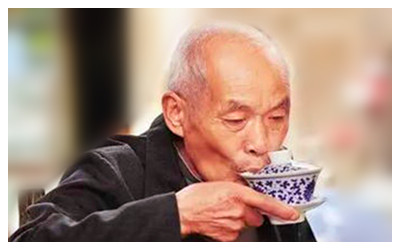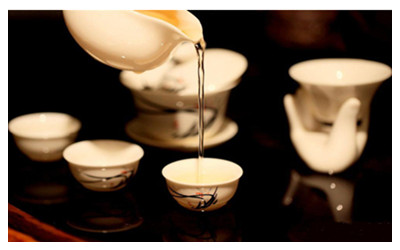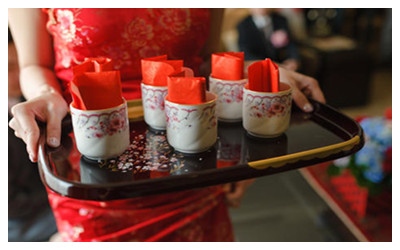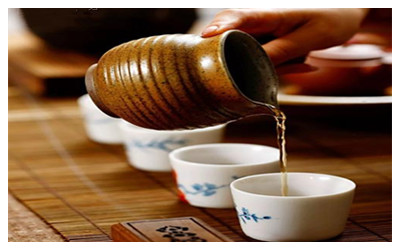
Chinese Tea Ceremony
 Gaiwan (cap-cup) Tea
Gaiwan (cap-cup) Tea
The Covered Tea was originally created by imperial family in the Qing Dynasty(1645-1911), and then, drinking tea with a cap-cup was the most prevalent way adopted by officials and civilians in Beijing. Today, because it can keep tea warm, the Covered Tea is popular everywhere in China.
Usually, people put the lid on the cup. If you need the tea to be thicker, you can use the lid to gently scrape the surface of the water, and turn tea in the bowl up and down.
 Kung-fu Tea
Kung-fu TeaDeveloping from the method recorded in Classics of Tea written by Lu Yu of the Tang Dynasty (618-907), Kung-fu tea is popular in southern Fujian area and Guangdong Province. In this method, tea is brewed with spring water. When the water is boiling, put Wuyi tea into a Yixing pot and brew it with the boiling water, and then pour warm water over the pot. The specialty of this method is to heat the pot with warm water both inside and outside in order to bring out the best quality of the tea.
The standard Kung-fu tea requires ten special techniques, namely back fire, shrimp-palp water (water with a temperature near boiling point), present the tea, put the tea, heat the cups, heat the pot, high pour, low pour, scrape off the foam, and clean the lid. Generally, there are four people involved in a Chaoshan Kung-fu tea ceremony, including the host who handles the process.
 Wedding Tea
Wedding TeaNowadays, many rural Chinese still refer to the wedding as "Shou Cha" (literally "accepting tea") or "Chi Cha" ("eating tea"), bride-price as "Cha Jin" ("tea money") and betrothal gifts as "Cha Li " ("tea gift"), preserving the custom of ancient marital practices.
 Chaniang (Mother Tea)
Chaniang (Mother Tea)
This has been the most popular way adopted by ordinary people. In this method, tea is poured from a big pot to several small cups. The typical illustration can be found in A Spring Market in A Time of Peace and Prosperity, drawn by Ding Guanpeng living in Emperor Qianlong's reign in the Qing Dynasty.







 Ask Questions ?
Ask Questions ?